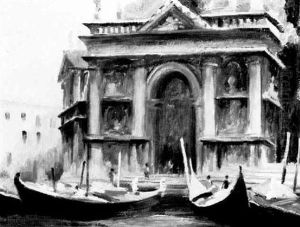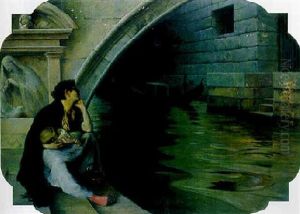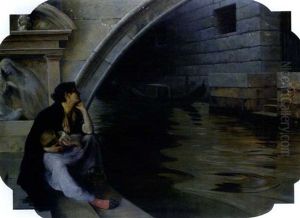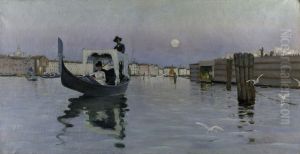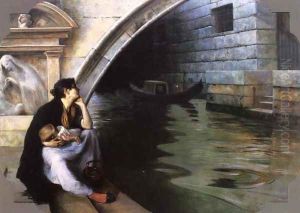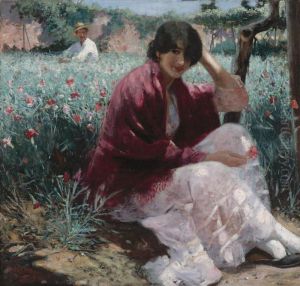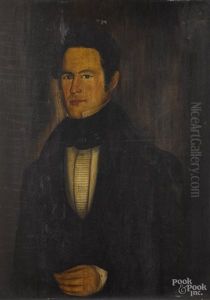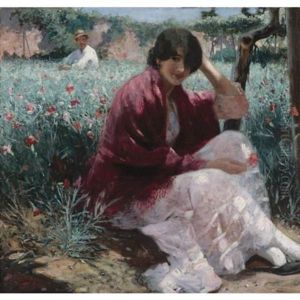Ralph Wormsley Curtis Paintings
Ralph Wormsley Curtis was an American painter and watercolorist born on December 28, 1854, in Newport, Rhode Island. He hailed from a well-to-do family, which enabled him to pursue his passion for art from a young age. Curtis's early education in the arts began under private tutors and continued in Europe, where he was significantly influenced by the vibrant art scenes in France and Italy.
Curtis settled in Venice, Italy, for a large part of his career, where he became enamored with the city's unique landscape and light. His works from this period often depict the serene and picturesque canals, gondolas, and historic architecture of Venice, capturing the ephemeral beauty of the city with a remarkable sensitivity to light and color. Curtis was part of the late 19th-century and early 20th-century movement of American expatriate artists who lived and worked in Europe, contributing to the cross-cultural exchange between the United States and Europe during this period.
In addition to his Venetian scenes, Curtis traveled extensively, painting landscapes and cityscapes across Europe. His style was influenced by Impressionism, although he never fully adopted the movement's techniques. Instead, Curtis developed a personal approach that focused on the atmospheric effects and the play of light, using a palette that was often vibrant yet harmonious.
Curtis exhibited his work in both Europe and the United States, gaining recognition and acclaim on both continents. He was a member of various art societies, including the Société Nationale des Beaux-Arts in France, which further cemented his reputation as a significant artist of his time.
Despite his success, Curtis remained relatively private about his personal life, focusing on his art and his travels. He continued to paint until his death on October 4, 1922, in France. Today, Ralph Wormsley Curtis's works are held in collections worldwide, appreciated for their luminous quality and the artist's ability to capture the essence of his subjects. His legacy as an American artist abroad contributes to the rich narrative of cultural and artistic exchange between the United States and Europe during the late 19th and early 20th centuries.

